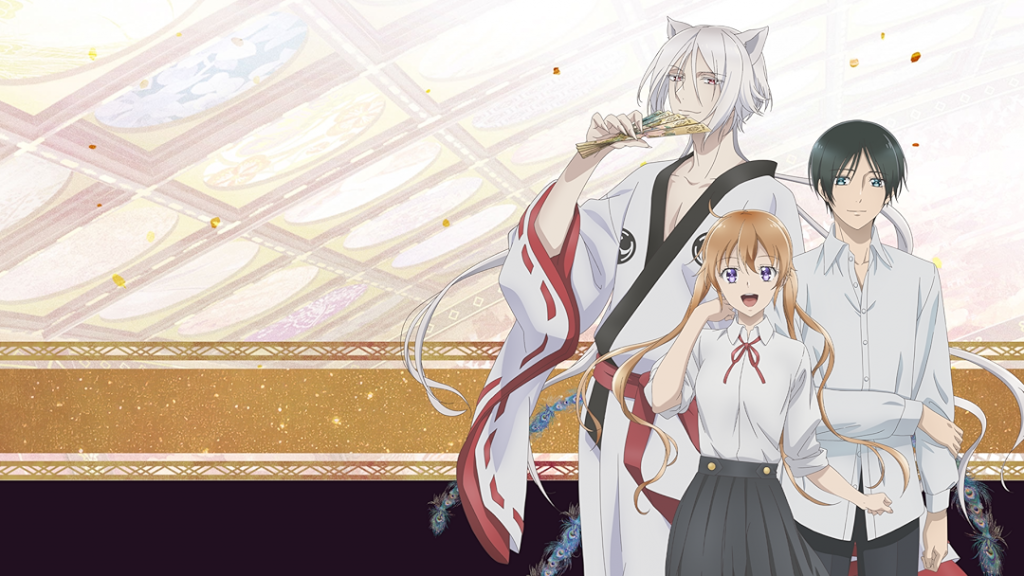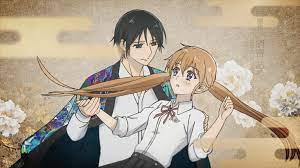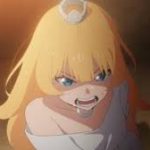It’s hard not to think about Sacrificial Princess and the King of Beasts when watching The Demon Prince of Momochi House. It’s not that they are comparable stories; in fact, they are very distinct, save that they both belong to the fantasy and shoujo subgenres. However, both shows adapt manga that ranges from fifteen to sixteen volumes in length. The former is hindered by a single cour adaptation and far less faithfulness to its main plot than the later, which received a full run covering its entirety.
This narrative centers on Himari Momochi, an orphan who finds out, on her sixteenth birthday, that her parents have left her a home in a remote area of the country. Himari, desperate to make a connection with them, departs from the group home where she was raised and goes to Momochi House, which is discovered to be a vast, sprawling house in the mountains that isn’t deserted. It appears at first that the place is inhabited by three attractive young males. But Himari soon finds that none are fully (or even remotely) human: A guardian known as the nue is needed to keep Momochi House in good condition. Momochi House is the gate that separates the human and ayakashi worlds. Usually, the nue has a Momochi family member with spiritual abilities, but Aoi has assumed the role in the absence of any. He entered Momochi House by accident when he was ten years old, and ever since he assumed the position, he has been stuck on the property, unable to get out. He is not alone; those two other young men are his shikigami, Yukari, and Ise. However, his life is not an ordinary one. Their new existence begins when he tries to get her to leave in an attempt to safeguard Himari, but she refuses.

It is important to acknowledge that The Demon Prince of Momochi House is not a wholly unfaithful adaptation. Covering Aoi’s history, Himari’s heritage, and the introduction of antagonist Kasha, it touches on most of the important storyline lines from the first half of Aya Shouoto’s manga. Notable incidents involving Himari’s school friends and the ayakashi who reared Aoi are also included. The connecting episodes—the minute elements that elevate it from a list of happenings to a fully realized narrative—are absent. Right now, there are gaps that we must cross in order to go from episode one to episode twelve, so it feels more like stepping stones than a fully constructed path. A strong sensation of something being missing permeates every episode, with the exception of the third, which moves too rapidly and omits important details. The climax also feels considerably less definitive than it should. Manga readers could experience that more keenly, but even anime-The way recurrent characters work makes it obvious to viewers alone that we’re receiving more of an outline than a complete plot. The best illustration of this is Kasha, whose motivations are unclear and only seem to revolve around causing difficulty for Nue and protecting his ownership of Momochi House. He is a vague “bad,” which seriously undermines his character.
The same is true of Nachi, a teacher at Himari’s school who functions in a completely different capacity outside of it. Though his objectives are only hinted at, he is the driving factor behind the mirror event in episode seven and the main plot of the remaining four episodes. Truth be told, he doesn’t really need to be a fully realized character because part of what he does is compel Aoi and Himari to confront their pasts. Still, he need to come across as more than just a vaguely cackling evil. Some of the plot points in his story succeed in doing this; the entire mirror episode is masterfully done and features some quite powerful visuals. The voices enhance the content of the manga, and a good use of the eerie children’s game “Kagome Kagome” is made. Unfortunately, this undermines the manga’s compelling plot, since if Nachi had been a more complex character, the entire episode could have been made darker and more tense.
This show isn’t bad in spite of these problems. To make up for the attempt to highlight eyelashes, rather than having everyone look like they have tiny blades or splinters over their eyes, there is some truly striking use of color throughout, with metallic golds and rich reds and blues in the traditional elements of Momochi House standing out beautifully. Because of their shared desire to be together and support each other in overcoming their problems, Aoi and Himari have a sweet relationship, and his story is sufficiently tragic to evoke strong feelings in the reader. From Aoi’s domineering nekomata grandmother cat to the foxes Himari brings to Momochi House when their guardian family is no longer able to see or assist them, the other ayakashi are entertaining. The animation isn’t very good; on occasion, it takes some obvious quick cuts, but it’s not awful either. It is possible to characterize this production as being in the intermediate range.
Did the manga deserve any better? It is without a doubt Shouoto’s best series. Additionally, it struggles to compete with other comparable shoujo manga adaptations, including Kamisama Kiss. However, despite these problems, The Demon Prince of Momochi House is still entertaining enough to watch. Despite being a shortened version that focuses more on the main story points than the characters who keep the whole thing together, it still has a strong core and is a reasonable length. To damn it with faint praise, “mediocre” is at least preferable to “bad.” It might have been so much more, and I’m sorry it isn’t.



